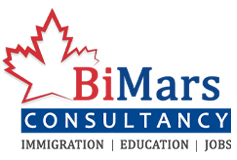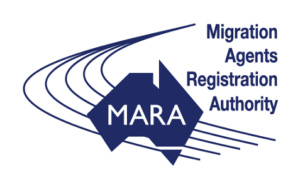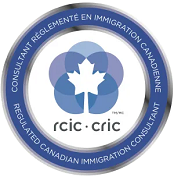A evaluate of Canadian immigration in 2021
ANALYSIS: The coronavirus pandemic persisted to have an effect on the route of Canada’s immigration gadget in 2021.
The onset of the coronavirus pandemic modified the direction of Canada’s immigration machine in 2020 and whilst matters have stabilized, the pandemic triggered IRCC to make primary changes in 2021.
Immigration, Refugees and Citizenship Canada (IRCC) entered 2021 dealing with hard circumstances. Immigration utility backlogs had been growing, many rookies such as Confirmation of Permanent Residence (COPR) holders waited in limbo overseas, COVID case stages have been excessive at domestic and round the world, vaccination prices remained low, journey restrictions and Canada’s public fitness measures posed difficulties for inexperienced persons searching to enter the country, and regardless of all this, This year, the federal government demanded that IRCC land 401,000 new permanent residents.
IRCC determined early in the yr the exceptional way to acquire this aim used to be to transition as many transient residents residing in Canada to everlasting residence. The warning signs and symptoms of this coverage shift at the opening of the yr have been apparent in hindsight, however nonetheless left stakeholders guessing in the absence of reputable IRCC coverage statements. Whereas IRCC used to be issuing Express Entry invites to all candidates to shut 2020, it commenced 2021 by means of focusing invites on Canadian Experience Class (CEC) candidates, given that some ninety per cent of them stay in Canada.
IRCC’s method on how it sought to acquire its 401,000-newcomer goal grew to be even greater obvious on February 13, 2021. On that Saturday, IRCC held the most top-notch draw in view that Express Entry used to be launched in 2015. It invited all of the 27,332 Express Entry candidates in the pool to follow for everlasting dwelling and felt compelled to launch a assertion explaining the decision. The announcement additionally referred to IRCC seemed ahead to welcoming greater humans from overseas when the COVID state of affairs improved.
In May, IRCC went to even greater efforts to ensure that it would meet its 401,000-newcomer goal by launching six short streams that would allow up to 90,000 essential persons and international graduates in Canada to apply for permanent residence.
By June, IRCC had ramped up its processing ability and used to be touchdown 35,000 everlasting residents per month (mostly from inside Canada) and in current months, has surpassed 45,000 month-to-month landings.
Last week, the branch proudly introduced it broke Canada’s file for everlasting resident landings in a calendar year. While the method to focal point on in-Canada landings has enabled IRCC to obtain its degrees aim and additionally enabled lots of hundreds to obtain their purpose of turning into everlasting residents, it has additionally come at a cost.
IRCC’s backlog has grown to 1.8 million applications, which it admits is in phase to the approach to prioritize in-Canada applicants. Many COPR holders, and candidates for everlasting residence, study, work, and traveller visas are ready longer than regular for IRCC to system their papers. Federal Skilled Worker Program (FSWP) candidates, who had been the essential crew of Express Entry immigrants prior to the pandemic, proceed to wait patiently for their names to be drawn from the pool. Moreover, the in-Canada approach has considered Canada’s populace and labour pressure increase gradual which has contributed to some of the perfect job emptiness stages in Canadian history.
IRCC stays restricted by using many occasions out of its control, such as COVID case counts and authority’s lockdown measures in Canada and abroad, as properly as the Canadian government’s journey policies. For instance, the Canadian government’s selection formerly this yr to ban flight arrivals from India (a ban which has due to the fact been lifted), by using some distance Canada’s main supply USA of newcomers, posed an essential impediment for IRCC.
Despite ongoing challenges, IRCC has laboured to maintain the immigration machine functioning. In January, for example, it introduced a coverage permitting Post-Graduation Work Permit (PGWP) holders to practice for a one-time extension to get an open work permit. The motive was once to provide these in Canada greater time to get the work ride, they want to be eligible to follow for everlasting residence. In the autumn, as any other example, it invited 30,000 sponsors to put up Parents and Grandparents Program applications.
Such insurance policies are, of course, fashioned with the aid of the elected authorities of the day. In September, the Liberal Party of Canada used to be re-elected to a 1/3 consecutive mandate. Since assuming electricity in 2015, they have overseen sizable will increase in Canada’s immigration stages from some 260,000 new everlasting residents then to over 400,000 today.
Following the election, Prime Minister Justin Trudeau appointed Sean Fraser, a attorney from Nova Scotia, as the new immigration minister.
Trudeau sent Fraser a fresh immigration mandate letter earlier this month. Fraser’s to-do list includes overseeing increasing immigration levels, improving application processing times, resettling 40,000 Afghan refugees, and reuniting families more quickly.
This yr is ending in a comparable trend to how it started. COVID tiers are surging in Canada and globally ensuing in improved uncertainty. Nevertheless, the Canadian authorities continues to view immigration as an essential ability of assisting Canada’s financial and social recovery.
Although the pandemic will proceed to pose challenges for IRCC and beginners alike, Canada’s overarching immigration coverage dreams stay unaffected by way of the pandemic which skill the arrival of everlasting residents, transient overseas workers, global students, and traffic must ultimately return to ordinary and will probably exceed pre-pandemic stages as soon as the worst of the disaster is in the back of us.



